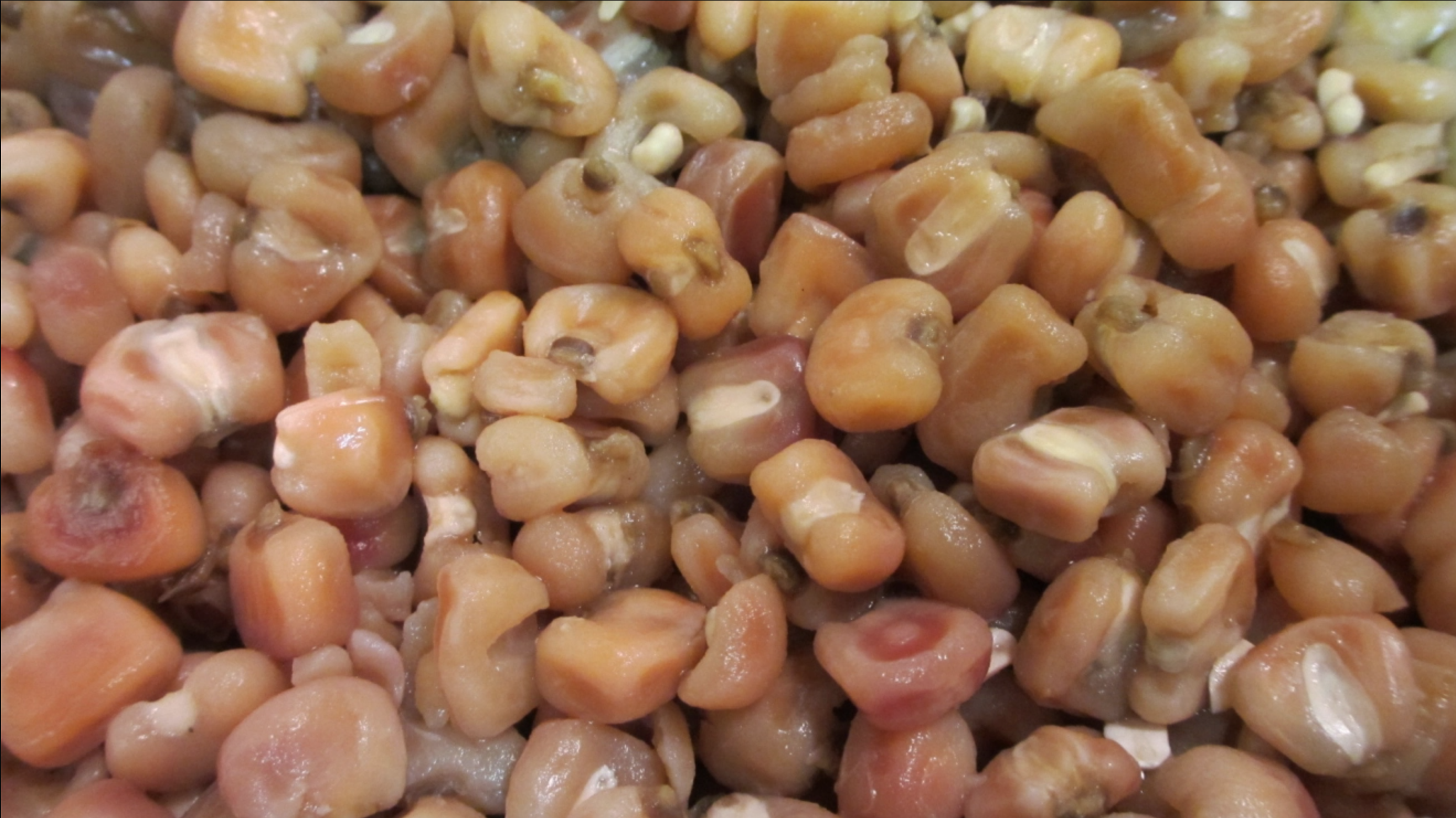
How To Nixtamalize Corn
To go with the seed story about Desert Dent Corn this month, we wanted to share guide for cooking corn. Nixtamalization is a process of cooking corn in an alkaline solution of water and hardwood ash or calcium hydroxide/lime. The process breaks down the outer wall of the kernels. The alkaline solution makes some of the nutrients in corn more bioavailable (most notably the amino acid tryptophan, and vitamin B3 (niacin) which is formed as tryptophan is metabolized. The process also makes the corn softer, larger, and more delicious—you’ll fill your kitchen with the classic corn tortilla smell.
Ingredients
- Corn. Most types of whole dry corn work: flour corn, dent corn, and flint corn. When in doubt, if it looks like whole kernels of dry corn, you’re good to go. Sweet corn kernels are shriveled when dry. Sweet corn and popcorn aren’t the best choices, but they would still likely work since they’re corn.
- Lime: 1-2% by weight. So 500g of corn needs 5-10g of lime. (Cooking lime is calcium hydroxide, also known as slaked lime. Lime can sometimes be purchased as “pickling lime” or in Mexican markets/aisles as “Cal”)
- Water.
- The Proper Ratio. A general weight ratio for success is a 1.5:100:300 ratio of lime to corn to water. This means that for every 100g of corn, you add 300g of water and 1.5g of lime (1.5% by weight). The amount of water you use may vary depending on boil time, elevation, humidity, and whether you have a lid on your pot (all of these factors affect how fast water evaporates).
Directions
- Boil. Mix all ingredients together and boil for about 45-60 minute. The larger the kernels, the longer they need to be boiled. Monitor your pot to make sure that the water doesn’t all boil off.
- Steep. Remove from heat and let the mixture steep overnight (8-12 hours). You may want to insulate the pot in a towel or blanket to keep it hot for longer. Make sure that the corn is still submerged with plenty of water when you take it off the heat—the kernels will absorb a lot of water overnight as they puff up to 3 or 4 times their original size. After the steep, taste some kernels to see if they’re soft. If not, you can boil a little longer or just re-heat the water for a longer steep. Some people say that overcooking or oversteeping will lead to overly gelatinous masa. Try out some different consistencies.
- Rinse. Strain the corn and rub between your hands to remove any remaining skins. Rinse the corn.
- Grind into masa or serve whole. Either serve whole (this is called hominy) or grind into masa for tortillas or tamales. Masa can be made in a grinder, blender, or food processor. Nixtamalized corn stores best whole—you can freeze or refrigerate it. Masa does not last as long as whole hominy.
Further Resources
For more on the science and specifics of nixtamalization, our beloved Serious Eats has a good article, as does the International Culinary Center.
For more on the science and specifics of nixtamalization, our beloved Serious Eats has a good article, as does the International Culinary Center.